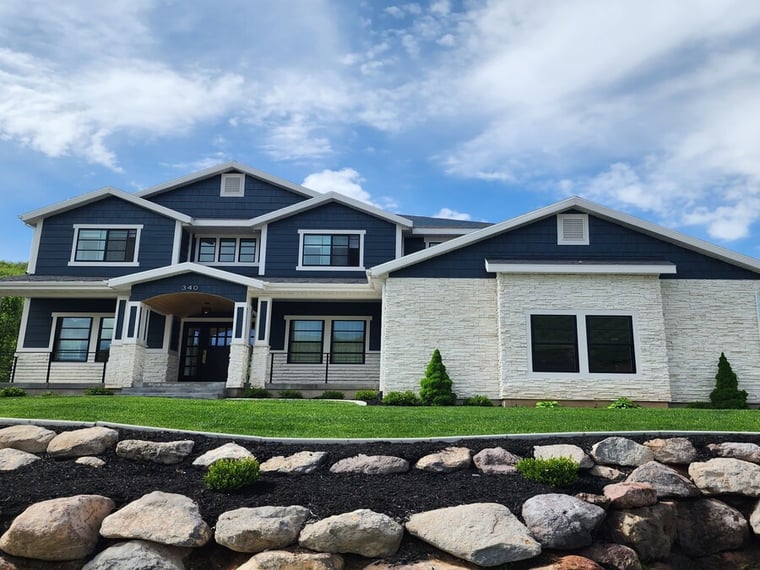
Transform your stucco exterior with the perfect finish by understanding the key differences between elastomeric paint and concrete stain.
Understanding Elastomeric Paint: Benefits and Drawbacks
Elastomeric paint is a highly durable and flexible coating designed to withstand harsh weather conditions. One of its primary benefits is its ability to stretch and contract with the substrate, which makes it ideal for surfaces that experience a lot of movement or structural shifts. This makes elastomeric paint particularly suited for stucco exteriors, which can develop small cracks over time.
However, elastomeric paint also has some drawbacks. It tends to be more expensive than traditional paints, and its thick consistency can make application more challenging. Additionally, it can trap moisture if not applied correctly, leading to potential issues with mold or mildew and paint chipping.
The Versatility of Concrete Stain: Pros and Cons
Concrete stain offers a unique way to enhance the appearance of stucco by penetrating the surface and adding color without forming a film. This allows for a more natural look that highlights the texture of the stucco. Concrete stains are also UV resistant, which means they won't fade as quickly as some paints.
On the downside, concrete stains do not provide the same level of protection as elastomeric paints. They are more susceptible to wear and tear, and they do not offer the same flexibility to cover cracks and imperfections. Additionally, concrete stains may require more frequent reapplication to maintain their appearance.
When to Choose Elastomeric Paint for Your Stucco
Elastomeric paint is ideal for stucco surfaces that require added protection against the elements. If your stucco exterior is prone to cracking or is located in an area with extreme weather conditions, elastomeric paint can provide a durable, long-lasting solution. Its ability to bridge hairline cracks can also prevent water from seeping in and causing further damage.
This type of paint is also a good choice for homeowners looking for a low-maintenance option that won't need frequent touch-ups. Its robust nature means that it can last for many years without significant fading or peeling.
Ideal Situations for Using Concrete Stain on Stucco
Concrete stain is best used in situations where aesthetics are the primary concern. If you want to enhance the natural beauty of your stucco with a subtle, earthy finish, concrete stain is an excellent choice. It works well on stucco that is in good condition without significant cracking or damage.
This product is also suitable for projects where a more natural, less glossy finish is desired. Additionally, because concrete stain penetrates the surface, it allows for the texture of the stucco to remain visible, offering a more organic and authentic look.
Expert Tips for a Long-Lasting Stucco Finish
To ensure a long-lasting finish, proper surface preparation is crucial regardless of whether you choose elastomeric paint or concrete stain. Powerwashing the stucco thoroughly to remove dirt, mold, and mildew, repair any cracks or imperfections with caulking or concrete depending on the size before applying the coating.
For elastomeric paint, apply in favorable weather conditions to avoid issues with moisture entrapment. Use a high-quality primer to enhance adhesion and longevity. For concrete stain, consider applying a sealant over the stain to protect the color and increase durability.
Lastly, always follow the manufacturer's instructions for application and maintenance to maximize the lifespan of your stucco finish.
.png?width=5203&height=6001&name=Principal@4x%20(3).png)